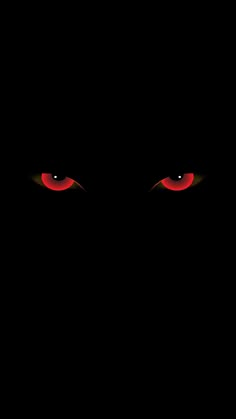Wallpaper has become one of the most popular décor solutions for transforming walls quickly, affordably, and creatively. Whether for homes, offices, restaurants, or retail spaces, adds texture, personality, and visual impact. With limitless designs—from minimalistic patterns to luxurious 3D textures—has evolved far beyond outdated paper rolls. Today’s materials are more durable, washable, and easy to install, making an excellent alternative to paint.
This guide explores the types of , benefits, installation tips, maintenance, pricing, and a detailed calculation method to help you determine how many rolls you need.
What Is ?
Wallpaper is a decorative wall-covering material sold in rolls or sheets. It is applied to interior walls using wallpaper adhesive or peel-and-stick technology. Unlike paint, wallpaper offers patterns, textures, and finishes that are difficult to achieve manually.
Today’s categories include:
- Vinyl
- Non-woven
- Peel and stick
- 3D textured
- Fabric
- Foil metallic
- Natural material (grasscloth, bamboo)
Each type serves different aesthetic and functional needs.
Types of
1. Vinyl
The most common type, made with PVC coating.
Features: durable, washable, moisture-resistant, ideal for kitchens and bathrooms.
2. Non-Woven
Non-toxic and breathable, preventing mold.
Features: tear-resistant, easy to remove, eco-friendly.
3. Peel-and-Stick
Self-adhesive and perfect for tenants.
Features: removable, no glue needed, ideal for quick décor.
4. Fabric
Premium quality with luxurious texture.
Features: high-end appearance, best for bedrooms, lounges.
5. 3D
Creates depth and visual drama.
Features: great for feature walls and modern interiors.
6. Foil or Metallic
Reflective and glamorous.
Features: adds brightness, suited for small or dark spaces.
7. Grasscloth & Natural
Eco-friendly and artisanal.
Features: hand-crafted look, adds warmth, requires careful maintenance.
Benefits of
✓ Long-Lasting
High-quality lasts 8–12 years, while paint needs refreshing every 2–3 years.
✓ Conceals Wall Imperfections
Wallpaper can hide minor cracks, dents, roughness, and uneven surfaces.
✓ Wide Variety of Designs
Textures, gradients, metallics, florals, geometric prints—endless possibilities.
✓ Easy Installation
Many wallpapers require minimal labor, especially peel and stick.
✓ Cost-Effective
Despite higher upfront cost, it lasts longer than paint, making it economical.
✓ Adds Luxury & Personality
transforms a dull room instantly.
Where to Use
- Bedroom feature wall
- Living room accent area
- Dining room background
- TV lounge walls
- Kids’ room designs
- Office cabins and meeting rooms
- Hotels, restaurants, cafés
- Boutiques and retail stores
Installation Process
Step 1: Wall Preparation
- Clean the wall
- Remove dust, paint flakes, and existing
- Fill cracks and sand uneven spots
- Apply primer if needed
Step 2: Measurement
Accurate measurement ensures you buy the right amount of .
Step 3: Cutting
Cut pieces with at least 2–3 inches extra for adjustments.
Step 4: Applying Adhesive
- For traditional : spread glue evenly
- For peel-and-stick: peel the backing paper off gradually
Step 5: Position & Smooth
Use a smoothing tool to eliminate bubbles and wrinkles.
Step 6: Trim Excess
Trim edges neatly with a sharp blade.
Maintenance Tips
- Clean gently using a damp cloth (vinyl wallpapers only)
- Avoid harsh chemicals
- Keep away from direct water exposure
- Repair peeling edges quickly
- Use protectors for corners
Cost
prices vary based on type and quality.
| Wallpaper Type | Price Range (per roll) |
|---|---|
| Vinyl | Affordable |
| Non-woven | Medium |
| Peel & Stick | Medium |
| Fabric | Expensive |
| 3D Textured | Medium–High |
| Metallic foil | High |
| Grasscloth | Luxury |
Labor costs vary depending on region and wall complexity.
Wallpaper Roll Calculation (Step-By-Step)
This is the most important part—how to calculate how many rolls you need.
Standard Wallpaper Roll Size
Most wallpaper rolls come in:
- Width: 53 cm (0.53 m)
- Length: 10 meters
- Coverage: ≈ 5 square meters per roll
Step 1: Measure the Wall
Multiply:
Wall height × Wall width = Total wall area (m²)
Example Calculation
Suppose your wall size is:
- Height: 3 meters
- Width: 4 meters
Wall area = 3 × 4 = 12 m²
Step 2: Subtract doors/windows (optional)
Let’s say you have a window:
- Window area: 1.5 m²
Net area = 12 – 1.5 = 10.5 m²
Step 3: Determine number of rolls
Number of rolls = Net area ÷ Roll coverage
Roll coverage ≈ 5 m²
Number of rolls = 10.5 ÷ 5 = 2.1 rolls
You must always round up.
Final required rolls = 3 rolls
Allowance for pattern matching
If the wallpaper has large patterns, add 1 extra roll for alignment.
Wallpaper vs. Paint: Quick Comparison
| Feature | Wallpaper | Paint |
|---|---|---|
| Durability | 8–12 years | 2–3 years |
| Cost | Medium–High | Low–Medium |
| Installation | Quick | Medium |
| Design Variety | Unlimited | Limited |
| Wall Coverage | Excellent | Moderate |
| Mess | Minimal | High |
Wallpaper wins in aesthetics and durability.
FAQs
1. How long does wallpaper last?
Good-quality wallpaper lasts 8 to 12 years with proper maintenance.
2. Is wallpaper safe for kitchens and bathrooms?
Yes—vinyl wallpaper is moisture-resistant and ideal for humid environments.
3. Can wallpaper be installed on damp walls?
No. Walls must be completely dry to prevent peeling or mold growth.
4. How many wallpaper rolls do I need?
A standard roll covers around 5 m².
Use the calculation formula shared above.
5. Can wallpaper be removed easily?
Peel-and-stick wallpaper removes easily.
Traditional wallpaper takes more time but can be removed with steam or hot water.
6. Is wallpaper more expensive than paint?
Yes at installation, but lasts much longer, making it cost-effective.
7. Does wallpaper damage the wall?
Not if installed and removed correctly.
8. Can I install myself?
Peel-and-stick are DIY-friendly.
Others may require professionals.
9. What is the best for bedrooms?
Non-woven, fabric, or soft-pattern wallpapers create relaxing atmospheres.
10. Can cover cracks?
Yes, it hides minor wall imperfections effectively.
calculation
Wallpaper is one of the most powerful ways to personalize interior spaces. Its durability, aesthetic flexibility, and ease of installation make it a preferred choice for homeowners and designers. With this guide and calculation method, you can confidently select the right wallpaper and determine how many rolls you need for your project.

